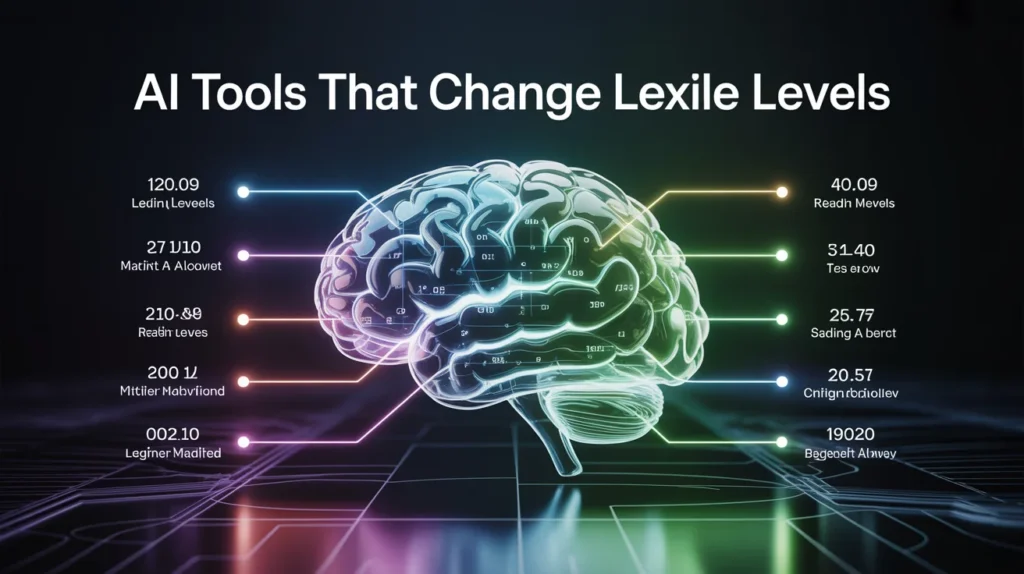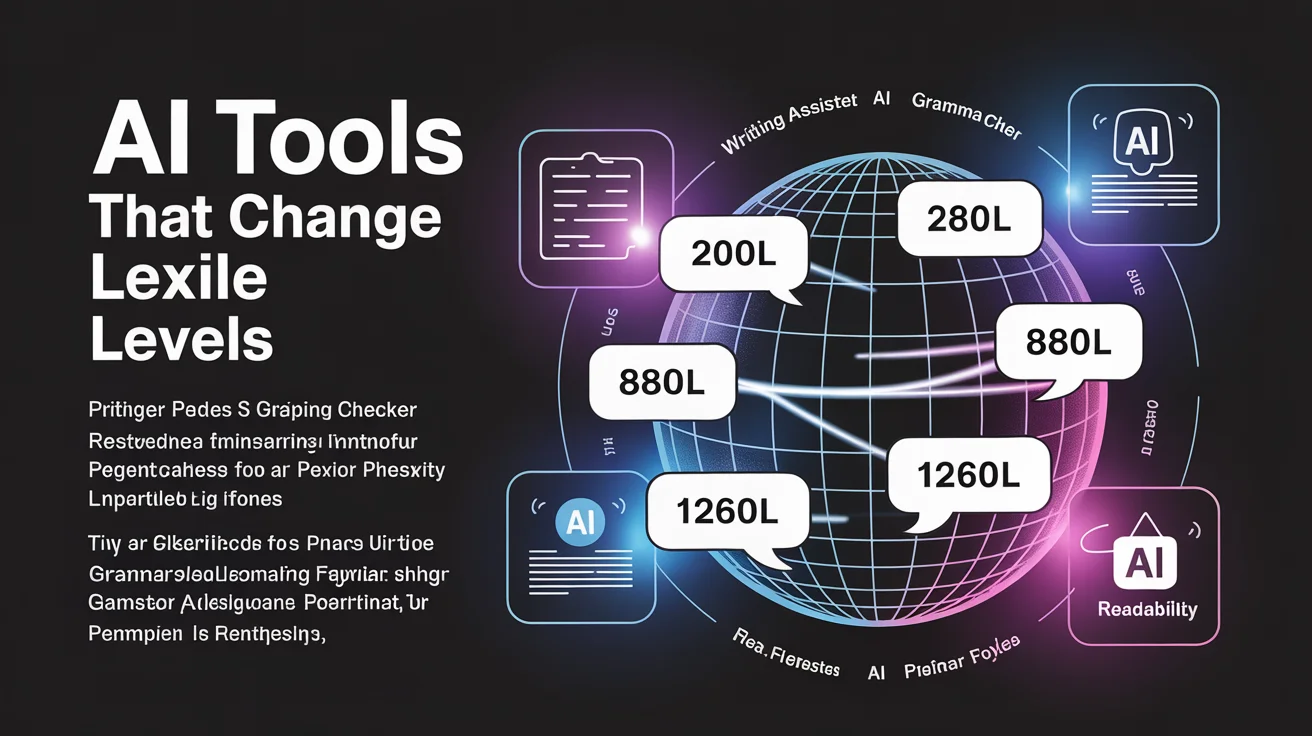Artificial Intelligence (AI) is transforming many aspects of education. One of the most significant changes is the use of AI tools that change Lexile levels. These tools help students, teachers, and parents by adjusting the difficulty of reading materials to fit individual reading abilities.
This technology makes learning easier and more personalized. In this article, we will explore what Lexile levels are, why they matter, and how AI tools are changing the way we understand and use Lexile levels.
What Are Lexile Levels and Why Do They Matter?
Lexile levels represent a standard measurement of reading ability and text difficulty. These levels provide a numerical value that helps match readers with texts suitable for their current skill level.
This means readers can choose books and articles that challenge them without causing frustration. Lexile levels have become a universal tool used by schools, libraries, and educational programs to guide reading selection and monitor progress.
By knowing a student’s Lexile level, teachers can plan lessons and reading activities that fit the learner’s needs. Parents can also find appropriate reading materials to support their child’s growth.
Tracking Lexile levels over time reveals how a student’s reading skills evolve, which is beneficial for both educators and learners. Overall, Lexile levels provide a clear framework for steadily improving reading skills.
How AI Tools Impact Lexile Levels
AI tools that change Lexile levels take the concept of personalized reading to a new level. Instead of manual assessment, AI analyzes text complexity and student reading data instantly. This allows dynamic adjustment of reading materials based on real-time feedback.
The AI’s ability to process vast amounts of data means it can recognize patterns in student reading habits, struggles, and strengths. It then adjusts text difficulty accordingly to optimize learning.
Key Benefits of AI Tools Adjusting Lexile Levels:
- Instant levelling of any text, including new or digital content
- Personalized reading materials for each learner
- Support for multilingual and diverse learners
- Continuous assessment and adjustment without teacher intervention
- Integration with digital platforms and e-readers for a smooth experience
This integration helps educators focus on teaching, while students enjoy more engaging and suitable reading content.
How AI Analyzes Text to Determine Lexile Levels

The way AI calculates Lexile levels involves analyzing many different aspects of a text. Using Natural Language Processing (NLP), AI examines features such as sentence length, vocabulary difficulty, and grammatical complexity.
Longer sentences and rarer words usually mean higher Lexile scores. Complex sentence structures also make a text more challenging to read.
In addition to these traditional features, AI looks at the meaning and context of words to better understand the overall difficulty. This semantic analysis enables the AI to assign a Lexile level that accurately reflects the text’s difficulty.
Thanks to AI’s speed and accuracy, this process occurs quickly, enabling educators and learners to receive instant feedback on reading materials.
Real-World Applications of AI Tools That Change Lexile Levels
AI tools changing Lexile levels are already making an impact in many areas:
- Schools: Teachers utilise AI-powered platforms to assign relevant reading materials and track student progress.
- Libraries: Digital libraries recommend books matching readers’ Lexile levels.
- E-Learning: Online courses adapt content difficulty to suit learners.
- Publishing: Publishers can automatically tag books with Lexile scores.
- Parents: AI apps suggest books and reading exercises tailored to children’s needs.
This technology empowers all stakeholders in the learning ecosystem to support reading development effectively.
Certainly! Here’s the rewritten version of that section with a short 3-line paragraph followed by bullet points, as you requested:
Examples of Popular AI Tools That Adjust Lexile Levels
Many AI-powered platforms have built-in features to adjust Lexile levels and personalize the reading experience. These tools are widely used in classrooms, libraries, and at home.
Below are some well-known examples of how AI is helping learners of all ages.
- Lexile Analyzer by MetaMetrics: An official tool that uses AI to analyze any text and assign a Lexile score.
- Newsela: Adjusts news articles into multiple Lexile levels for classroom use.
- ReadWorks: Offers AI-leveled passages and comprehension questions for students.
- Achieve3000: Utilizes AI to deliver personalized instruction with Lexile adjustments.
- Epic!: A children’s digital library with AI that recommends books based on reading levels.
How AI Tools Improve Reading Engagement
Matching reading materials to a student’s Lexile level has a substantial impact on their motivation and engagement. When texts are too complex, students can become frustrated and discouraged. If the material is too easy, they might lose interest. AI tools help by offering texts at just the right level for each learner.
This balance encourages students to read more often and with greater confidence. Immediate feedback and personalized recommendations from AI systems also make the reading experience more interactive.
Students feel supported and challenged in an appropriate manner, which promotes a love for reading and fosters continuous improvement.
Challenges in Using AI for Lexile Adjustments
While AI tools offer numerous benefits, they also present several challenges. Sometimes, AI may not fully understand the subtle meanings or cultural context in texts, which can affect the accuracy of Lexile scoring.
There is also a risk that AI systems reflect the biases present in the data on which they were trained.
Another challenge is accessibility. Not all schools or families have access to the devices or internet connections needed to use AI-powered reading tools.
Teachers also require proper training to utilise these technologies effectively in the classroom. Finally, handling students’ data safely and ethically is a critical concern that must be addressed.
Future Trends in AI and Lexile Level Adjustments
Looking ahead, AI tools that change Lexile levels will become even more intelligent and more adaptive. Advances in machine learning will allow these systems to tailor reading experiences even more precisely.
Voice assistants and AI tutors can be integrated to help students improve their reading skills in real-time.
Additionally, AI will expand beyond text levelling to include audio and video content, making learning more diverse. Real-time assessments will provide instant adjustments to reading difficulty.
Collaboration between AI developers and educational researchers will improve the accuracy and effectiveness of these tools, benefiting learners worldwide.
Conclusion:
AI tools that change Lexile levels are transforming reading education. By personalizing reading content to match learners’ skills, these tools make learning more effective and enjoyable. They provide instant analysis, continuous adjustment, and actionable insights for teachers and learners.
The journey to mastery in reading becomes smoother with the aid of AI. Educators can focus on guiding students while AI ensures that texts are neither too easy nor too difficult.
Frequently Asked Questions:
Q1: What are AI tools that adjust Lexile levels?
AI tools that adjust Lexile levels are software programs that adjust the difficulty of reading materials to match a learner’s reading ability.
Q2: How do these AI tools help students?
They provide personalized reading content, making reading easier to understand and more engaging for students.
Q3: Can AI tools replace teachers in assessing reading levels?
No, AI tools assist teachers but do not replace their role in guiding and supporting students.
Q4: Are AI tools for Lexile adjustments available for free?
Some AI tools offer free versions, but many require a payment or a school subscription for full access.
Q5: Why is changing Lexile levels with AI important?
It helps learners read at the right difficulty, improving comprehension and encouraging steady progress.




